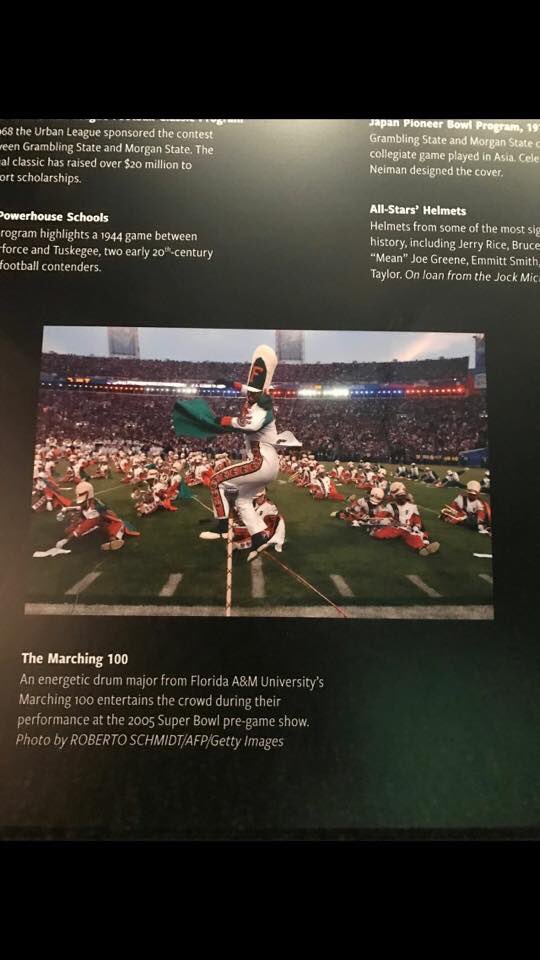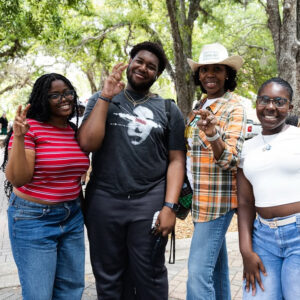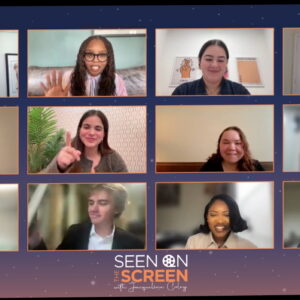| October 11th, 2016
Smithsonian National Museum of African-American History and Culture Features FAMU Marching 100
By: journeymagazine

Words By: Aliyah Weems
The grand opening of the Smithsonian National Museum of African American History and Culture on Saturday, September 24th, marked a momentous day in history.
The museum features more than 36,000 artifacts and works of art, but one piece in particular is very near and dear to Florida A&M University.
The Marching 100, also known as the most imitated marching band in America, is highlighted as a game changer in an exhibition that explores sports and contributions from Historically Black Colleges and Universities.
The museum defines game changers as “the people, events, and institutions that have forced the sports world and larger society to alter its practices, belief systems, racial politics.” These shifts are said to have led to the mainstreaming of African-American cultural practices and the redefinition of gender roles, as well as a change in the racial composition of the athletic institutions.
Over the past 70 years, the Marching 100 has built a legacy through innovating and reshaping the world’s concept of the collegiate marching band. The “100” has performed at Super Bowl games, the Olympics, presidential inaugurations, Bastille Day in France, and has been featured in countless articles and documentaries as the best band in the land.
On June 1st 1946, William P. Foster was appointed as the Director of Bands at FAMU with just 16 members. By 1950, the band grew to 110 members and became widely known as the Marching 100. Shortly after its emergence, the halftime show became a tradition that people from all over the world traveled to see and an experience that some even describe as life changing.
FAMU Alumni and former member of the Marching 100, Morgan Harris, shared his experience and what inspired him to join the band.
“FAMU would come to Miami for the Orange Blossom Classic Parade and football game and they were absolutely awe inspiring. I just knew for many years that I had to be apart of that special group” said Harris.
“When we played Bethune-Cookman in 1980, I was only 17 years old and there were 60,000 at the Tampa Stadium. The crowd went absolutely crazy over the Lovely One/SOS dance routine we did. We signed autographs after that. It changed my life”.
Alesha Singleton, former Clarinet Section Leader of the Marching 100, performed in Paris, France for the French Bicentennial Day Parade and Celebration in 1989. She expressed her gratitude and thoughts on being featured in the Smithsonian NMAAHC.
“It is an honorary accomplishment, not just for the Marching 100 but for all HBCU bands as a whole. It certifies the artistic value and creativity that we gave to band pageantry and musicianship” Singleton said.
“It elevates our decades of excellence to have it accredited and recognized on an international scale. The positive exposure makes me proud to be an alumni member of such an iconic organization”.
The Smithsonian National Museum of African American History and Culture was established by an Act of Congress in 2003. It is the only national museum devoted exclusively to the documentation of African American life, culture and history.
In the words of Lonnie G. Bunch III, founding director of the museum, “this museum will tell the American story through the lense of African American history and culture. This is America’s story and this museum is for all Americans”.
For more information on the Smithsonian National Museum of African American History and Culture, visit https://nmaahc.si.edu/





